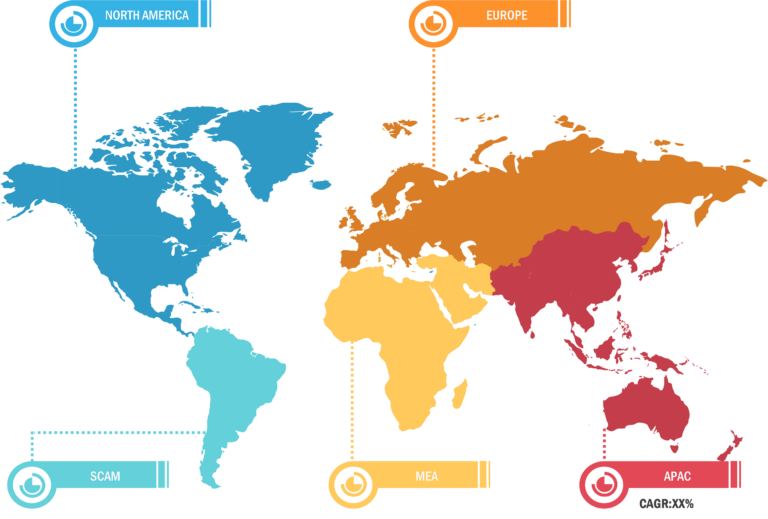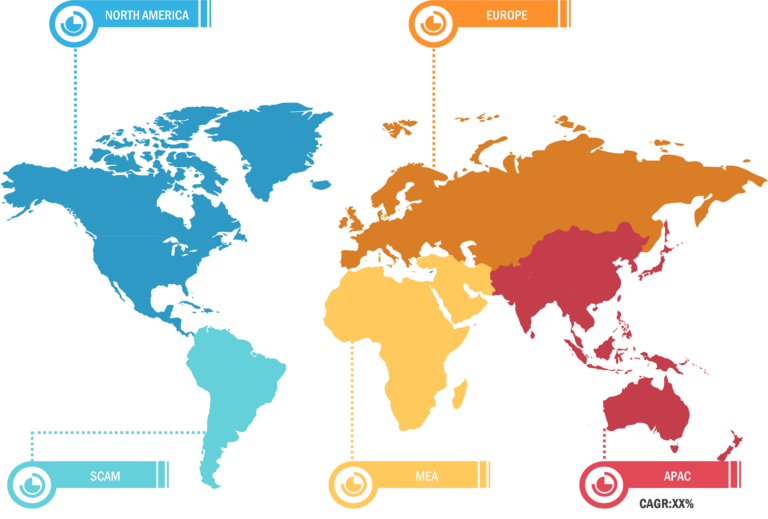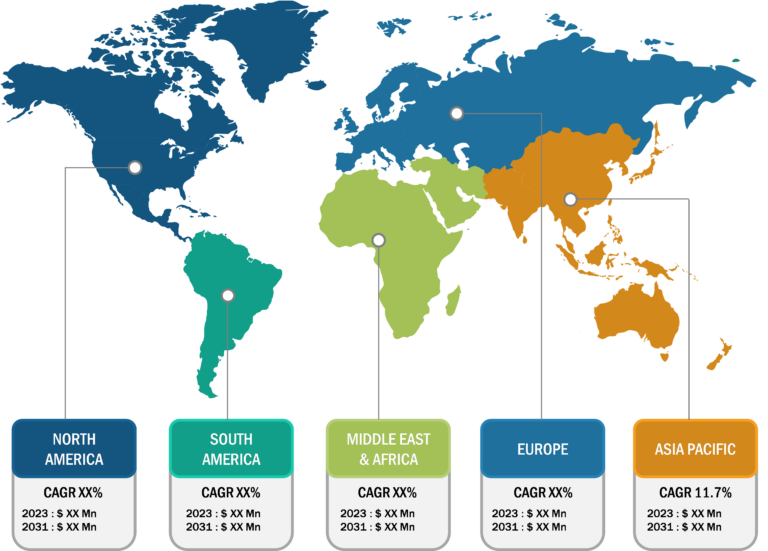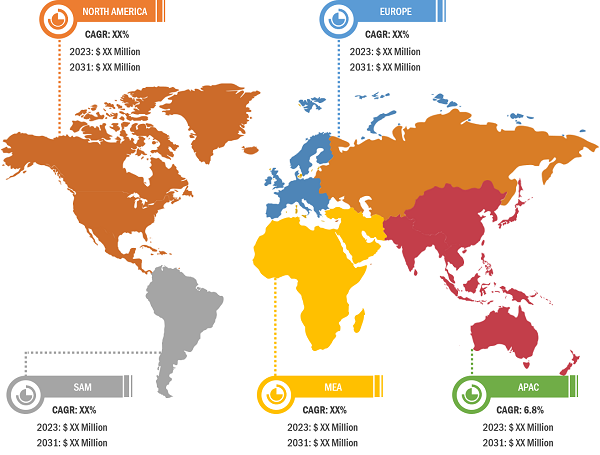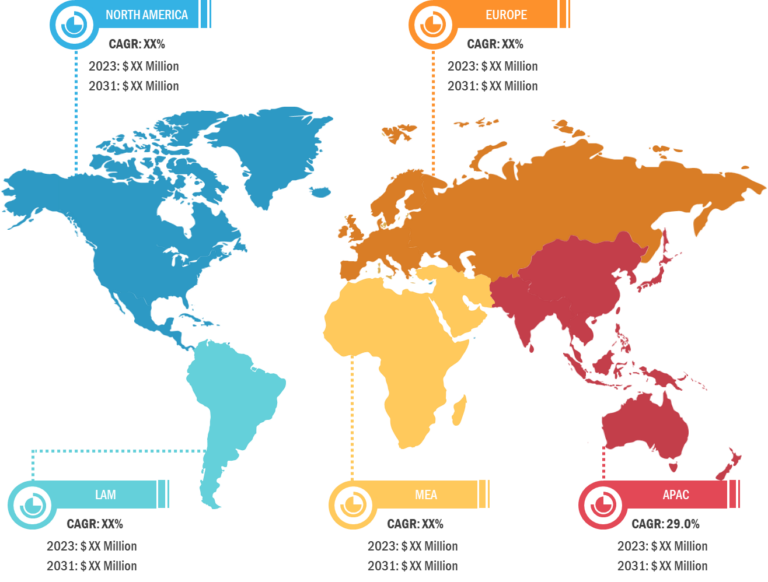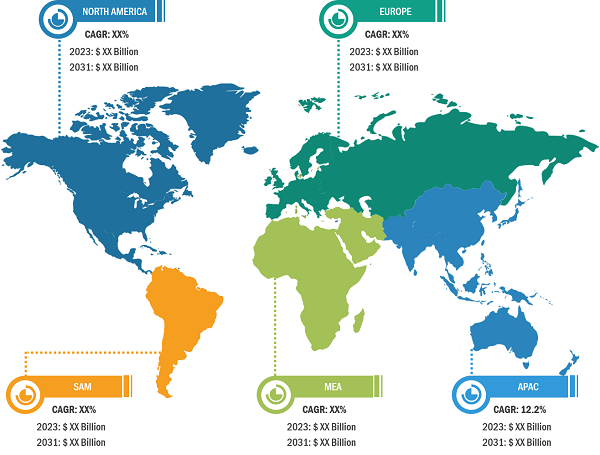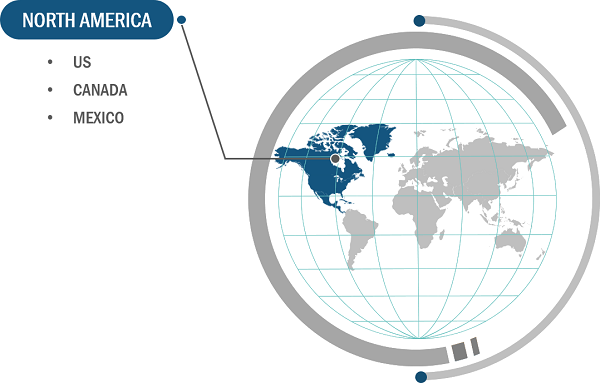
Molecular Diagnostics for Infectious Diseases Market
Surging Prevalence of Infectious Disease Globally
Public health is adversely affected by infectious diseases, causing morbidity, mortality, and economic burdens. Infectious diseases are on the rise, necessitating accurate and timely diagnosis to form the basis for effective disease management, treatment, and prevention. Diagnosing and monitoring multiple infections and diseases—including HIV, tuberculosis, hepatitis C, human papillomavirus screening for cervical cancer, and sexually transmitted infections, as well as outbreaks of infections—can be performed using molecular diagnostics techniques, laboratory-based assays, and point-of-care tests. According to an article published in the National Library of Medicine (NLM) in 2021, infectious diseases are a major problem in most African countries due to limited healthcare resources and the high disease burden. More than 200 pathogens can cause fever in Nigeria, one of the most common reasons for visiting a healthcare facility. These pathogens include malaria parasites, Salmonella enterica and hemorrhagic viruses. It is impossible to reliably detect life-threatening pathogens with only culture results. Therefore, efficient molecular diagnostics are essential in areas with high infectious disease burdens.
A resurgence in certain infectious diseases has been observed over the past few years. For instance, the reemergence of diseases such as tuberculosis, malaria, and hepatitis has necessitated the development of effective diagnostic tools to identify the causative agents and determine effective treatment regimens. According to the World Health Organization (WHO), ~10.6 million cases of tuberculosis were reported globally in 2021, which is equivalent to 134 cases per 100,000 people. TB cases are reported as follows in countries such as South-East Asia (45%), Africa (23%), the Western Pacific (18%), Eastern Mediterranean (8.1%), the Americas (2.9%), and Europe (2.2%). In 2021, four countries recorded malaria deaths as follows: Nigeria (31%), the Democratic Republic of the Congo (13%), Niger (4%), and Tanzania (4%). According to the WHO African Region’s estimates, there were roughly 40 million pregnancies in 38 moderate and high transmission countries in 2021, of which 13.3 million (32%) contracted malaria during pregnancy. Thus, the surging prevalence of infectious disease propels the need for molecular diagnostic technology over traditional techniques, such as microbial culture, hemagglutination inhibition tests, and enzyme-linked immunosorbent assays (ELISA).

Molecular Diagnostics for Infectious Diseases Market: Segmental Overview
The “Global Molecular Diagnostics for Infectious Diseases Market” is segmented based on type, application, disease type, infection type, end user, and geography. Based on type, the molecular diagnostics for infectious diseases market is segmented into point of care testing and laboratory testing. In 2022, the laboratory testing segment held a larger share of the market. However, point-of-care testing segment is expected to grow at a faster rate during the coming years. The point-of-care (POC) tests can greatly improve the management of infectious diseases, especially in developing countries where access to timely medical care is challenging and the healthcare infrastructure is inadequate and sparse. The rise in the demand for home healthcare encourages manufacturers to commercialize user-friendly portable products, and the emergence of smartphone-oriented healthcare solutions, digital technologies, and embedded vision-based solutions further influence the point-of-care testing (POCT) market. Additionally, the significance of POC diagnostics in environmental monitoring and public health, the number of CLIA-waived POC tests, the increase in technological advancement, and the surge in healthcare expenditure positively affect the point-of-care testing (POCT) market.
The inclination of end users toward point-of-care testing is also estimated to drive market growth. The point of care molecular diagnostics market provides rapid actionable insights for patient care in real time and at the site of the disease encounter. Thus, various major players are focused on research and development activities to develop POC diagnostic solutions for developing countries. Key companies continuously advance their product offerings by launching new products, forming collaborations, and mergers and acquisitions. In July 2021, QuantuMDx launched the rapid polymerase chain reaction point-of-care diagnostic system called Q-POC for diagnosing COVID-19.
The molecular diagnostic for infectious diseases market, by end user, is bifurcated into point-of-care testing and laboratory testing. Point-of-care testing is further bifurcated into human testing and vet testing. Similarly, laboratory testing is further bifurcated into human testing and vet testing. The human testing segment led the market in 2022 with a share of 92.2% and is expected to retain its dominance during the forecast period by accounting for 91.6% of the total market by 2030.
The molecular diagnostic for infectious diseases market, by application, is segmented into point-of-care testing and laboratory testing. Point-of-care testing is further segmented into detection of a single pathogen, detection of two or more pathogens, evaluation of emerging novel infections, surveillance and early detection of biothreat agents and diseases-related biomarkers, and antimicrobial resistance profiling. Laboratory testing is further segmented into patient stratification, drug regimen selection, toxicity avoidance, therapeutic monitoring, and detection of predisposition to disease.
The molecular diagnostic for infectious diseases market, by disease type, is bifurcated into point-of-care testing and laboratory testing. Point-of-care testing is further segmented into detection of a sepsis, prosthetic joint infection, endocarditis, STDs, mononucleosis, group A streptococcus (GAS), and others. Laboratory testing is further segmented into sepsis, prosthetic joint infection, endocarditis, STDs, chlamydia, gastrointestinal infection, tuberculosis, H1N1 virus, and others.
The molecular diagnostic for infectious diseases market, by infection type, is bifurcated into point-of-care testing and laboratory testing. Point-of-care testing is further segmented into bacteria, viral, fungi, and others. Laboratory testing is further segmented into bacteria, viral, fungi, and others.
Molecular Diagnostics for Infectious Diseases Market: Competitive Landscape and Key Developments
F. Hoffmann-La Roche Ltd., Abbott Laboratories, Thermo Fisher Scientific Inc, bioMerieux SA, Danaher Corp, Hologic Inc, Siemens Helathineers AG, Bruker Corp, Molzym GmbH & Co KG, and DiaSorin SpA are among the leading companies operating in the molecular diagnostics for infectious diseases market. These players focus on expanding and diversifying their market presence and acquiring a novel customer base, tapping prevailing business opportunities in the molecular diagnostics for infectious diseases market.
Market players are launching new products in the market. Below are a few instances:
- In July 2021, DiaSorin acquired Luminex. Through the acquisition, DiaSorin will gain access to Luminex’s multiplexing technology and a portfolio that will strengthen its existing offering while expanding the Group presence in the US. Additionally, this deal will provide access to Luminex’s applications throughout the Life Science industry, supporting academic and scientific research, expanding engagement with biopharma companies, and increasing access to clinical multiplexing assays for future value-based care projects.
- In December 2022, Molzym GmbH & Co KG announced a partnership with the French Society of Microbiology (SFM) to promote and stimulate the field of microbiology.
- In April 2023, Bruker introduced new mycobacteria and fungi IVD solutions for MALDI Biotyper, and a Novel LiquidArray Gastrointestinal Syndromic Panel. With the introduction of new IVD workflows, kits, software, and reference libraries for mycobacteria and fungi, the company further expanded the applications of the established MALDI Biotyper platform. This creates additional value for all current and future customers. The new LiquidArray Gastrointestinal is a next-generation syndromic panel with amazing pathogen coverage. It is ideal for laboratories interested in a broad screening approach to detect most pathogens in one run.

